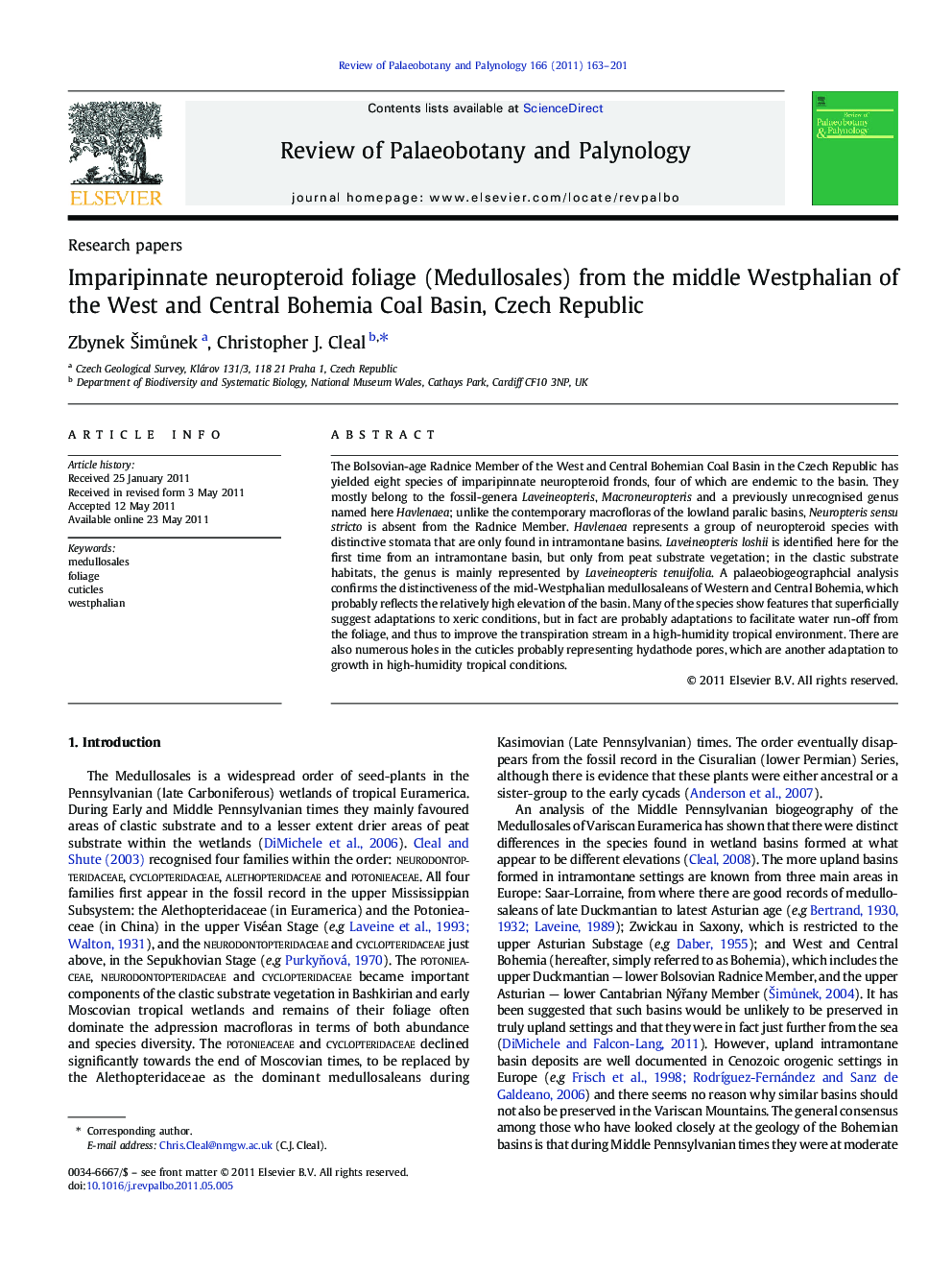| Article ID | Journal | Published Year | Pages | File Type |
|---|---|---|---|---|
| 4750527 | Review of Palaeobotany and Palynology | 2011 | 39 Pages |
The Bolsovian-age Radnice Member of the West and Central Bohemian Coal Basin in the Czech Republic has yielded eight species of imparipinnate neuropteroid fronds, four of which are endemic to the basin. They mostly belong to the fossil-genera Laveineopteris, Macroneuropteris and a previously unrecognised genus named here Havlenaea; unlike the contemporary macrofloras of the lowland paralic basins, Neuropteris sensu stricto is absent from the Radnice Member. Havlenaea represents a group of neuropteroid species with distinctive stomata that are only found in intramontane basins. Laveineopteris loshii is identified here for the first time from an intramontane basin, but only from peat substrate vegetation; in the clastic substrate habitats, the genus is mainly represented by Laveineopteris tenuifolia. A palaeobiogeographcial analysis confirms the distinctiveness of the mid-Westphalian medullosaleans of Western and Central Bohemia, which probably reflects the relatively high elevation of the basin. Many of the species show features that superficially suggest adaptations to xeric conditions, but in fact are probably adaptations to facilitate water run-off from the foliage, and thus to improve the transpiration stream in a high-humidity tropical environment. There are also numerous holes in the cuticles probably representing hydathode pores, which are another adaptation to growth in high-humidity tropical conditions.
Research highlights► The Radnice Member yields Laveineopteris and Macroneuropteris, but not Neuropteris. ► Havlenaea is a new fossil-genus endemic to Westphalian intramontane basins. ► The distinctive Radnice Member flora reflects the higher elevation of the basin. ► Cuticle evidence indicates plants adapted to growth in wetland habitats.
